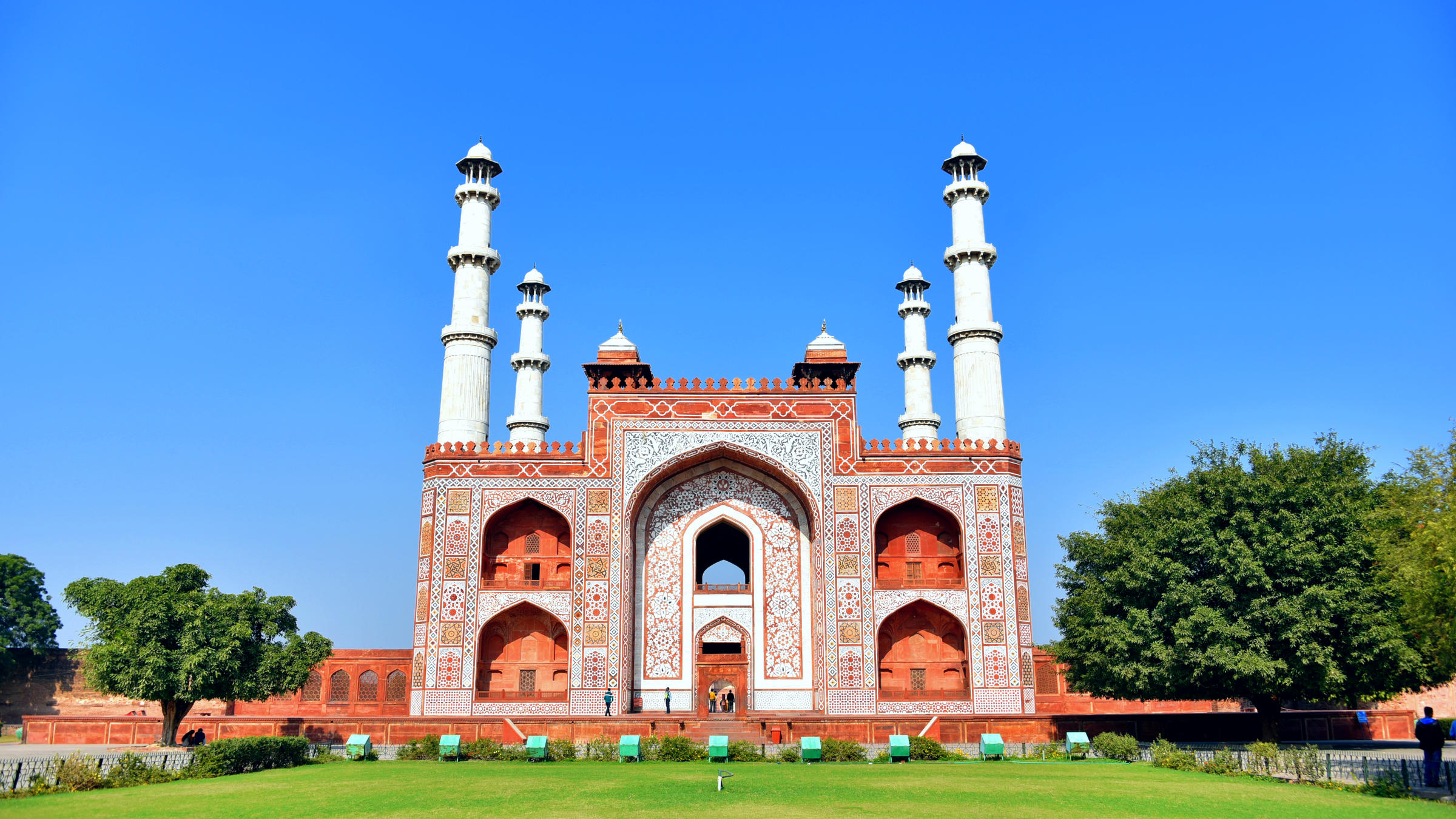Sikandra Fort, also known as Akbar’s Tomb, is a historical monument located in Sikandra, a suburb of Agra in the state of Uttar Pradesh, India. It is a significant Mughal-era structure that served as the final resting place of Emperor Akbar, the renowned Mughal emperor. Let’s delve into the details of Sikandra Fort:
Introduction:
Sikandra Fort is a magnificent mausoleum complex that was commissioned by Emperor Akbar himself during his lifetime. The construction of the tomb began in 1605 and was completed in 1613, under the supervision of Akbar’s son, Emperor Jahangir. The fort represents the fusion of different architectural styles, showcasing elements of Islamic, Hindu, Buddhist, and Jain design.click here
Architecture and Design:
The architectural style of Sikandra Fort reflects the grandeur and splendor of the Mughal era. The fort complex is built using red sandstone, with intricate marble inlay work. It is surrounded by lush gardens and is located in the center of a vast square enclosure.
The main structure of Sikandra Fort is the tomb of Emperor Akbar. It is a four-tiered pyramid-like structure, known as a “sanduk,” with each tier gradually diminishing in size as it rises. The tomb is adorned with beautiful marble decorations, including intricate carvings and calligraphy.

The entrance to the fort complex is through a massive gate called Buland Darwaza, which is similar in style to the gate of Fatehpur Sikri. The gate is adorned with intricate artwork and inscriptions from the Quran.
Inside the fort, there are beautifully landscaped gardens with fountains and water channels. The gardens provide a serene and peaceful atmosphere, ideal for a leisurely stroll.
Historical Significance:
Sikandra Fort holds great historical significance as the final resting place of Emperor Akbar, one of the most influential rulers of the Mughal Empire. Akbar was known for his progressive policies, religious tolerance, and patronage of art and culture. The construction of his tomb during his lifetime was an unprecedented gesture and demonstrates his deep connection to the place.
Visiting Sikandra Fort:
When visiting Sikandra Fort, you can explore the tomb complex and its surroundings. As you enter through the majestic Buland Darwaza, you will be greeted by the impressive architecture and serene ambiance.
Inside the tomb, you can pay homage to Emperor Akbar and marvel at the intricate marble work and carvings. The tomb is situated in the center of a spacious chamber and is surrounded by beautiful gardens. Take your time to appreciate the exquisite craftsmanship and the peaceful surroundings.
Exploring the gardens surrounding the tomb is a delightful experience. The well-maintained pathways, lush greenery, and refreshing fountains create a tranquil atmosphere, providing a pleasant escape from the bustling city.
It is worth mentioning that Sikandra Fort is not limited to Emperor Akbar’s tomb alone. The complex also houses the tombs of several other members of the royal family, including Emperor Jahangir’s wife, Empress Mariam-uz-Zamani.
Conclusion || Sikandra Fort
Sikandra Fort, or Akbar’s Tomb, is a testament to the grandeur and architectural brilliance of the Mughal Empire. It stands as a remarkable tribute to Emperor Akbar, showcasing the fusion of different architectural styles and the artistic mastery of the craftsmen of that era.
Visiting Sikandra Fort allows travelers to immerse themselves in history, appreciate exquisite craftsmanship, and experience the serene beauty of the surrounding gardens. It is a must-visit destination for history enthusiasts and those seeking a deeper understanding of the Mughal heritage in Agra, India.
Book Your Flights : Here 30% OFF on Booking
Book Your Hotels : Here 20% OFF on Booking

0 Comment